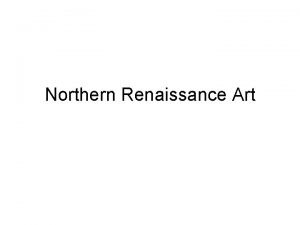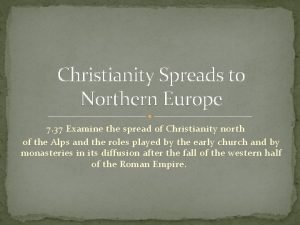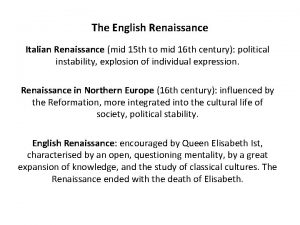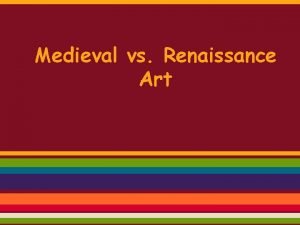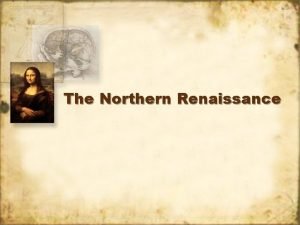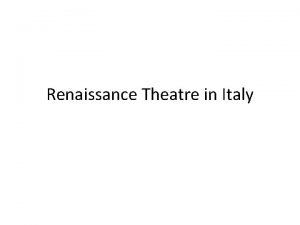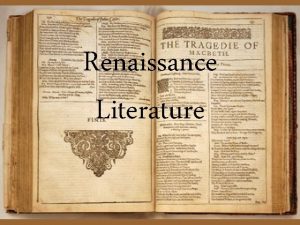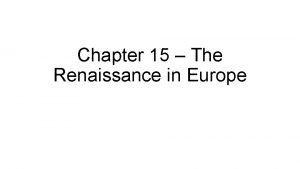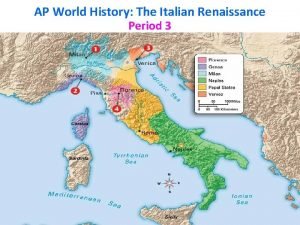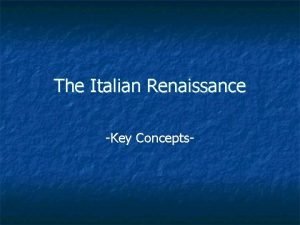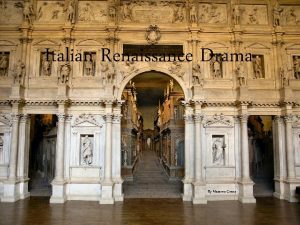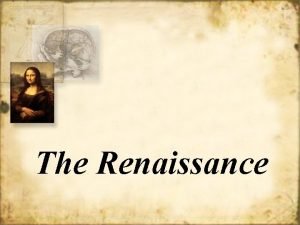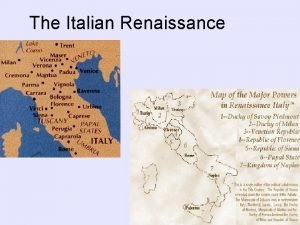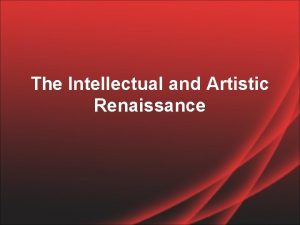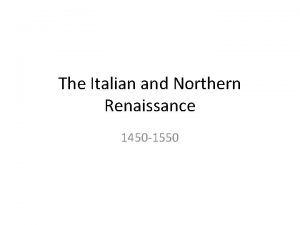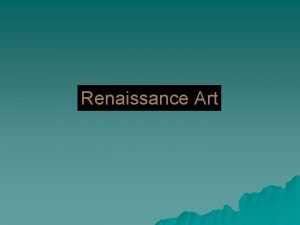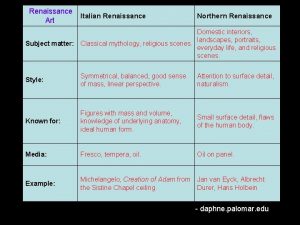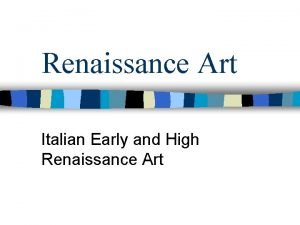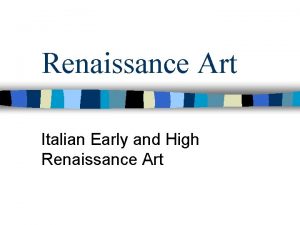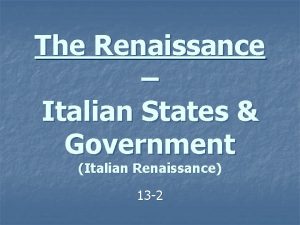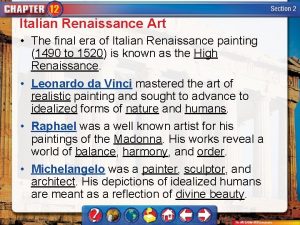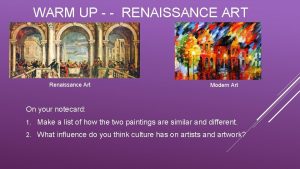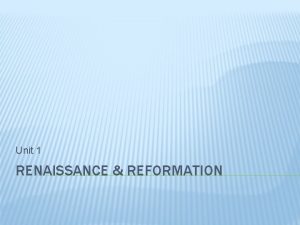Italian Renaissance Art Transition to Renaissance More realistic






















- Slides: 22

Italian Renaissance Art

Transition to Renaissance More realistic, lifelike

Techniques

Perspective PIERO DELLA FRANCESCA’s Ideal City, (c. 1470)

Emotions Expulsion of Adam & Eve From Eden, Mosaccio

Anatomy MICHELANGELO’S David

Architecture

Duomo di Firenze • • • Brunelleschi’s Duomo in Florence Built between 14201436 Utilized principles of Classical architecture

Basilica of San Lorenzo • • • Reflects a return to Classical columns Also Brunelleschi Commissioned by the Medici

Painting

Masaccio’s Expulsion of Adam & Eve (1425) GET OUT! • • Masaccio painted much more lifelike figures Also, he included very human expressions Stupid stupid… Waaahhh

Masaccio’s Holy Trinity (1427) • Vanishing point, perspective • Triangular • Architecture details

Botticelli’s Adoration of the Magi (1475) • Variety of expressions • Medici family as subjects • Self Portrait?

Sandro Botticelli’s Venus and Mars (1483) • • • Pagan themes more common Power of love defeats the warrior Most likely commissioned for a wedding

Da Vinci’s The Last Supper (c. 1495) • • Judas betrayal Composition – 3’s

Michelangelo & Sistine Chapel (1508 -1512) • Truly suggests a divine aspect of man • Glorifies human form

Raphael’s School of Athens (c. 1509) • Features Renaissance artists & ancient philosophers • Religious symbolism • Reconciliation between pagan learning/classics and church?

Sculpture

Lorenzo Ghiberti’s Sculpture

Sculpture Baptistery Doors Competition Panels – Ghiberti and Brunelleschi (1402 -3)

Donatello’s David (1446 -60) • Natural portrayal of youth • Contrapposto classical stance

Michelangelo’s David (1501) • • Glorifies human form Idea of small overcoming large Power of the Florentine Republic as the underdog
 Lirik lagu more more more we praise you
Lirik lagu more more more we praise you More more more i want more more more more we praise you
More more more i want more more more more we praise you Hunters in the snow artist
Hunters in the snow artist Italian renaissance vs northern renaissance venn diagram
Italian renaissance vs northern renaissance venn diagram Italian renaissance vs english renaissance
Italian renaissance vs english renaissance First three hall of famers of early renaissance
First three hall of famers of early renaissance Italian high renaissance
Italian high renaissance Food chain consumer levels
Food chain consumer levels Renaissance vs medieval art
Renaissance vs medieval art Middle ages
Middle ages Italian city states of the renaissance
Italian city states of the renaissance Italian and northern renaissance similarities
Italian and northern renaissance similarities Italian renaissance theatre history
Italian renaissance theatre history Northern renaissance literature
Northern renaissance literature Renaissance italian dress
Renaissance italian dress Chapter 15 the renaissance in europe
Chapter 15 the renaissance in europe Renaissance ap world history
Renaissance ap world history Renaissance key terms
Renaissance key terms Italian renaissance actors
Italian renaissance actors Mona lisa why no eyebrows
Mona lisa why no eyebrows Italian renaissance ppt
Italian renaissance ppt The father of italian renaissance humanism
The father of italian renaissance humanism Italian and northern renaissance
Italian and northern renaissance


